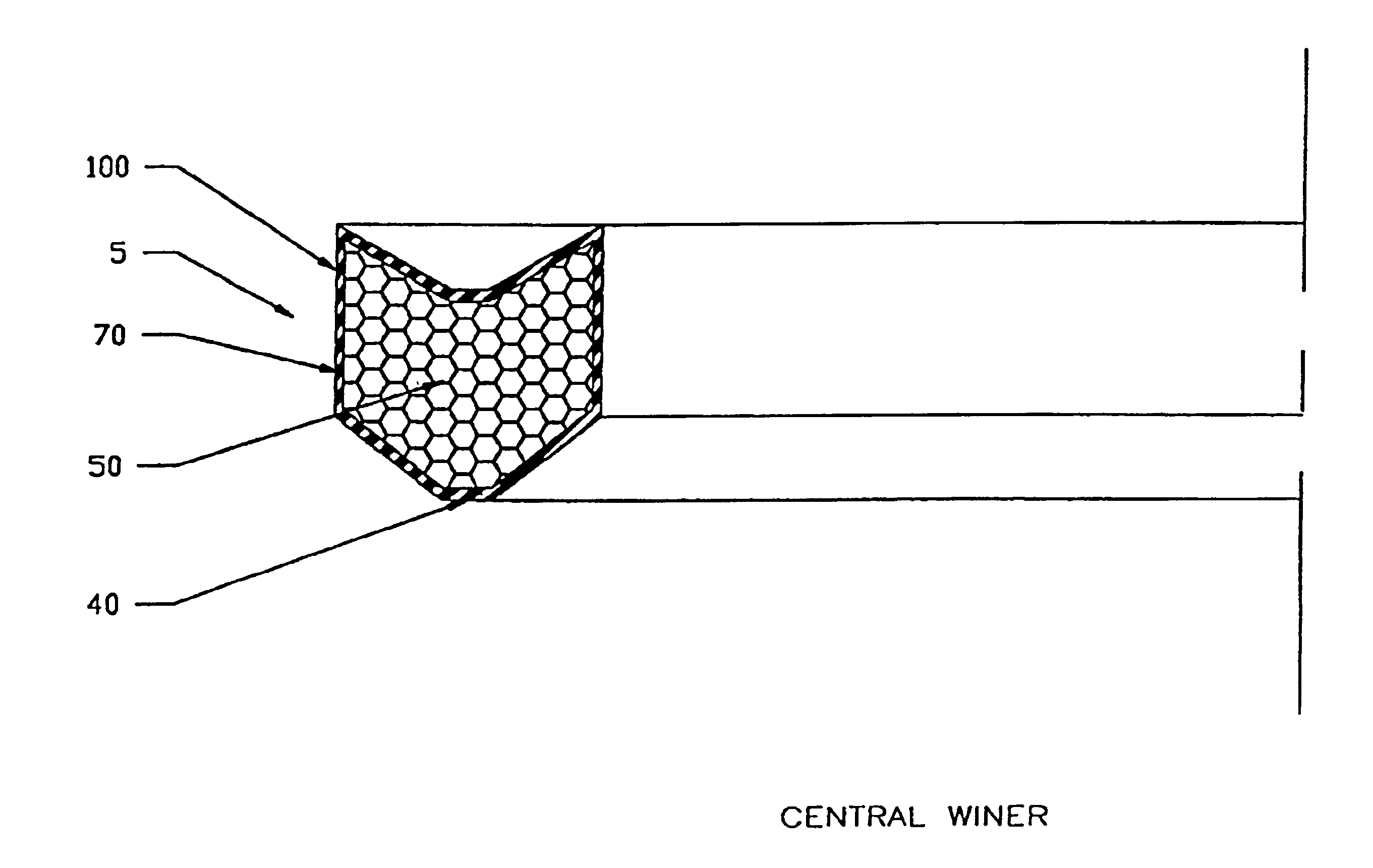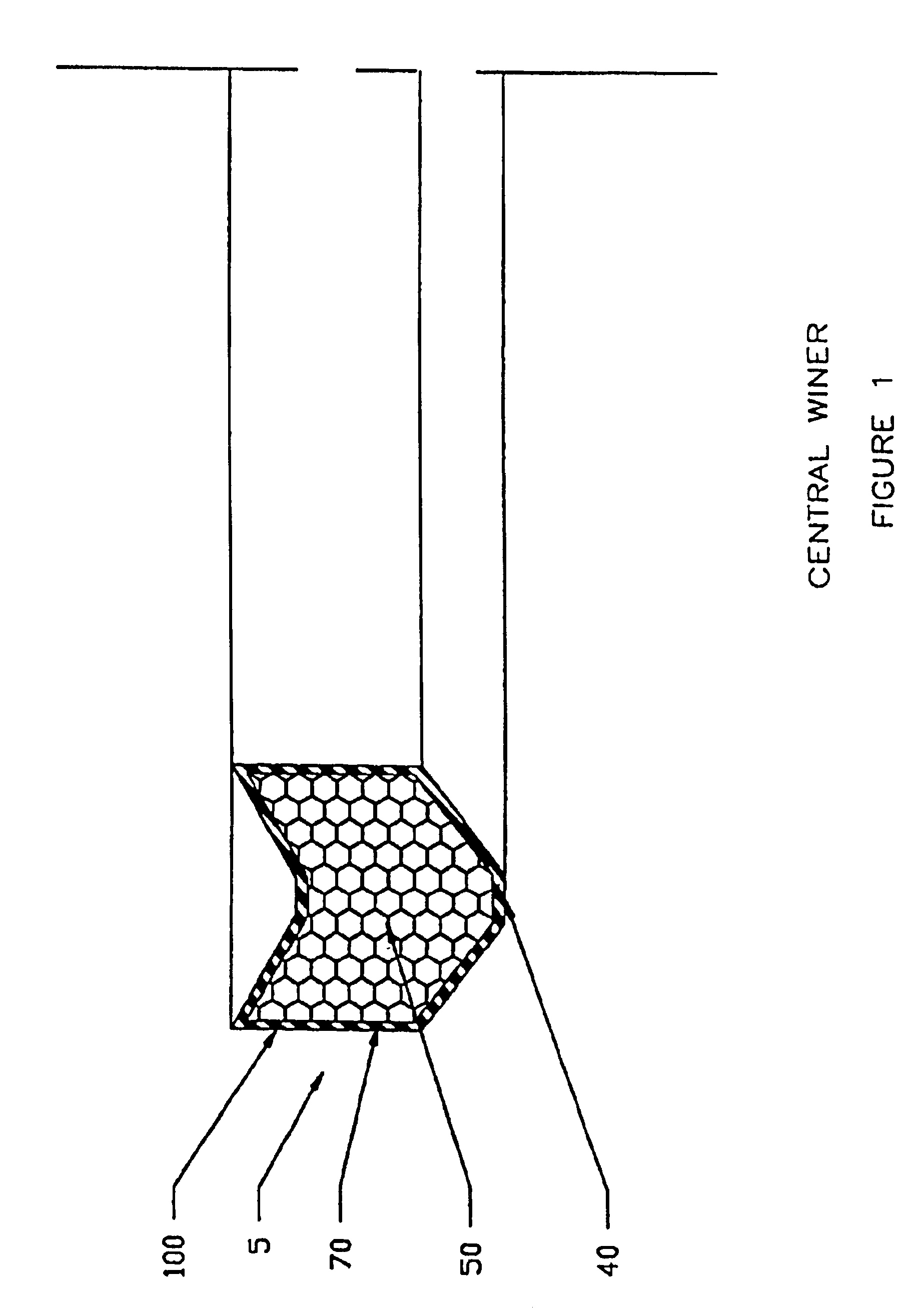Rubber and wire mesh ring
a technology of wire mesh and ring, which is applied in the direction of hose connection, cable termination, mechanical equipment, etc., can solve the problems of requiring additional length, requiring bulky systems, and reducing the service life of the system,
- Summary
- Abstract
- Description
- Claims
- Application Information
AI Technical Summary
Benefits of technology
Problems solved by technology
Method used
Image
Examples
Embodiment Construction
As seen in FIG. 1, the back-up ring 5 of the present invention is shown having wire mesh vee shape 50 with an outer coating 100 of sealing material 70. This permits back-up ring 5 with the wire mesh 50 to have increased physical strength. The back-up ring 5 retains nearly all physical strength at high temperatures and thermally expands negligibly compared to the typical vee ring. The materials are such that a co-efficient of thermal expansion while the back-up ring 5 is under pressure is less than or equal to the surrounding gland metal.
Referring to FIG. 7, the surfaces of back-up ring 5 include an upper surface 10, which has a modified vee shape with a horizontal portion 11 and angled sides 12, a vertical inner surface 20 and a vertical outer surface 30. Surfaces 20, 30 are preferably symmetrical. Surface 10 is concave to allow pressure to energize surfaces 20, 30 of back-up ring 5. Surfaces 20, 30 remain in contact with their adjacent conduits 120, 130, respectively, and maintain ...
PUM
 Login to View More
Login to View More Abstract
Description
Claims
Application Information
 Login to View More
Login to View More - R&D
- Intellectual Property
- Life Sciences
- Materials
- Tech Scout
- Unparalleled Data Quality
- Higher Quality Content
- 60% Fewer Hallucinations
Browse by: Latest US Patents, China's latest patents, Technical Efficacy Thesaurus, Application Domain, Technology Topic, Popular Technical Reports.
© 2025 PatSnap. All rights reserved.Legal|Privacy policy|Modern Slavery Act Transparency Statement|Sitemap|About US| Contact US: help@patsnap.com



